Как и в предыдущих версиях, Android 15 включает изменения в поведении, которые могут повлиять на ваше приложение. Следующие изменения в поведении применяются исключительно к приложениям, предназначенным для Android 15 и более поздних версий. Если ваше приложение предназначено для Android 15 и более поздних версий, вам следует изменить его для корректной поддержки этих изменений, где это применимо.
Обязательно ознакомьтесь со списком изменений поведения, которые влияют на все приложения, работающие на Android 15, независимо от targetSdkVersion вашего приложения.
Основная функциональность
Android 15 изменяет или расширяет различные основные возможности системы Android.
Изменения в приоритетных службах
Мы вносим следующие изменения в службы переднего плана в Android 15.
- Поведение времени ожидания службы синхронизации данных на переднем плане
- Новый тип приоритетной службы обработки мультимедиа
- Ограничения на широковещательные приемники
BOOT_COMPLETED, запускающие службы приоритета - Ограничения на запуск служб переднего плана, пока приложение имеет разрешение
SYSTEM_ALERT_WINDOW
Поведение тайм-аута службы синхронизации данных на переднем плане
Android 15 introduces a new timeout behavior to dataSync for apps targeting
Android 15 (API level 35) or higher. This behavior also applies to the new
mediaProcessing foreground service type.
The system permits an app's dataSync services to run for a total of 6 hours
in a 24-hour period, after which the system calls the running service's
Service.onTimeout(int, int) method (introduced in Android
15). At this time, the service has a few seconds to call
Service.stopSelf(). When Service.onTimeout() is called, the
service is no longer considered a foreground service. If the service does not
call Service.stopSelf(), the system throws an internal exception. The
exception is logged in Logcat with the following message:
Fatal Exception: android.app.RemoteServiceException: "A foreground service of
type dataSync did not stop within its timeout: [component name]"
To avoid problems with this behavior change, you can do one or more of the following:
- Have your service implement the new
Service.onTimeout(int, int)method. When your app receives the callback, make sure to callstopSelf()within a few seconds. (If you don't stop the app right away, the system generates a failure.) - Make sure your app's
dataSyncservices don't run for more than a total of 6 hours in any 24-hour period (unless the user interacts with the app, resetting the timer). - Only start
dataSyncforeground services as a result of direct user interaction; since your app is in the foreground when the service starts, your service has the full six hours after the app goes to the background. - Instead of using a
dataSyncforeground service, use an alternative API.
If your app's dataSync foreground services have run for 6 hours in the last
24, you cannot start another dataSync foreground service unless the user
has brought your app to the foreground (which resets the timer). If you try to
start another dataSync foreground service, the system throws
ForegroundServiceStartNotAllowedException
with an error message like "Time limit already exhausted for foreground service
type dataSync".
Testing
To test your app's behavior, you can enable data sync timeouts even if your app
is not targeting Android 15 (as long as the app is running on an Android 15
device). To enable timeouts, run the following adb command:
adb shell am compat enable FGS_INTRODUCE_TIME_LIMITS your-package-name
You can also adjust the timeout period, to make it easier to test how your
app behaves when the limit is reached. To set a new timeout period, run the
following adb command:
adb shell device_config put activity_manager data_sync_fgs_timeout_duration duration-in-milliseconds
Новый тип приоритетной службы обработки мультимедиа
В Android 15 представлен новый тип службы переднего плана — mediaProcessing . Этот тип службы подходит для таких операций, как перекодирование медиафайлов. Например, мультимедийное приложение может загрузить аудиофайл, и ему необходимо преобразовать его в другой формат перед воспроизведением. Вы можете использовать службу переднего плана mediaProcessing чтобы гарантировать, что преобразование продолжается, даже когда приложение находится в фоновом режиме.
Система разрешает службам mediaProcessing приложения работать в общей сложности 6 часов в течение 24-часового периода, после чего система вызывает метод Service.onTimeout(int, int) работающей службы (представленный в Android 15). В это время у службы есть несколько секунд для вызова Service.stopSelf() . Если служба не вызывает Service.stopSelf() , система выдает внутреннее исключение. Исключение регистрируется в Logcat со следующим сообщением:
Fatal Exception: android.app.RemoteServiceException: "A foreground service of
type mediaProcessing did not stop within its timeout: [component name]"
Чтобы избежать исключения, вы можете сделать одно из следующих действий:
- Пусть ваш сервис реализует новый метод
Service.onTimeout(int, int). Когда ваше приложение получит обратный вызов, обязательно вызовитеstopSelf()в течение нескольких секунд. (Если вы не остановите приложение сразу, система выдаст ошибку.) - Убедитесь, что службы
mediaProcessingвашего приложения не работают более 6 часов в течение любого 24-часового периода (если только пользователь не взаимодействует с приложением, сбрасывая таймер). - Запускайте службы переднего плана
mediaProcessingтолько в результате прямого взаимодействия с пользователем; поскольку ваше приложение находится на переднем плане при запуске службы, у вашей службы есть полные шесть часов после того, как приложение перейдет в фоновый режим. - Вместо использования службы переднего плана
mediaProcessingиспользуйте альтернативный API , например WorkManager.
Если службы переднего плана mediaProcessing вашего приложения работали в течение 6 часов за последние 24, вы не сможете запустить другую службу переднего плана mediaProcessing , пока пользователь не переведет ваше приложение на передний план (что сбрасывает таймер). Если вы попытаетесь запустить другую службу переднего плана mediaProcessing , система выдаст ForegroundServiceStartNotAllowedException с сообщением об ошибке, например «Ограничение времени уже исчерпано для типа службы переднего плана mediaProcessing».
Дополнительные сведения о типе службы mediaProcessing см. в разделе Изменения в типах служб переднего плана для Android 15: обработка мультимедиа .
Тестирование
Чтобы проверить поведение вашего приложения, вы можете включить тайм-ауты обработки мультимедиа, даже если ваше приложение не предназначено для Android 15 (при условии, что приложение работает на устройстве Android 15). Чтобы включить таймауты, выполните следующую команду adb :
adb shell am compat enable FGS_INTRODUCE_TIME_LIMITS your-package-name
Вы также можете настроить период ожидания, чтобы было проще протестировать поведение вашего приложения при достижении предела. Чтобы установить новый период ожидания, выполните следующую команду adb :
adb shell device_config put activity_manager media_processing_fgs_timeout_duration duration-in-milliseconds
Ограничения на широковещательные приемники BOOT_COMPLETED , запускающие службы приоритета
Существуют новые ограничения на широковещательные приемники BOOT_COMPLETED , запускающие службы приоритета. Получателям BOOT_COMPLETED не разрешено запускать следующие типы служб приоритета:
-
dataSync -
camera -
mediaPlayback -
phoneCall -
mediaProjection -
microphone(это ограничение действует дляmicrophoneначиная с Android 14)
Если получатель BOOT_COMPLETED пытается запустить любой из этих типов служб переднего плана, система выдает исключение ForegroundServiceStartNotAllowedException .
Тестирование
Чтобы проверить поведение вашего приложения, вы можете включить эти новые ограничения, даже если ваше приложение не предназначено для Android 15 (при условии, что приложение работает на устройстве Android 15). Запустите следующую команду adb :
adb shell am compat enable FGS_BOOT_COMPLETED_RESTRICTIONS your-package-name
Чтобы отправить широковещательную рассылку BOOT_COMPLETED без перезагрузки устройства, выполните следующую команду adb :
adb shell am broadcast -a android.intent.action.BOOT_COMPLETED your-package-name
Ограничения на запуск служб переднего плана, пока приложение имеет разрешение SYSTEM_ALERT_WINDOW
Раньше, если приложение имело разрешение SYSTEM_ALERT_WINDOW , оно могло запустить службу переднего плана, даже если приложение в данный момент находилось в фоновом режиме (как обсуждалось в разделе об исключениях из ограничений фонового запуска ).
Если приложение предназначено для Android 15, это исключение теперь уже. Теперь приложению необходимо иметь разрешение SYSTEM_ALERT_WINDOW , а также иметь видимое окно наложения. То есть приложению необходимо сначала запустить окно TYPE_APPLICATION_OVERLAY , и это окно должно быть видимым перед запуском службы переднего плана.
Если ваше приложение пытается запустить службу переднего плана в фоновом режиме, не отвечая этим новым требованиям (и у него нет других исключений), система выдает ForegroundServiceStartNotAllowedException .
Если ваше приложение объявляет разрешение SYSTEM_ALERT_WINDOW и запускает службы переднего плана в фоновом режиме, это изменение может повлиять на него. Если ваше приложение получает исключение ForegroundServiceStartNotAllowedException , проверьте порядок операций вашего приложения и убедитесь, что в нем уже есть активное окно наложения, прежде чем оно попытается запустить службу переднего плана из фона. Вы можете проверить, видимо ли ваше окно наложения в данный момент, вызвав View.getWindowVisibility() , или вы можете переопределить View.onWindowVisibilityChanged() чтобы получать уведомления при каждом изменении видимости.
Тестирование
Чтобы проверить поведение вашего приложения, вы можете включить эти новые ограничения, даже если ваше приложение не предназначено для Android 15 (при условии, что приложение работает на устройстве Android 15). Чтобы включить эти новые ограничения на запуск служб переднего плана в фоновом режиме, выполните следующую команду adb :
adb shell am compat enable FGS_SAW_RESTRICTIONS your-package-name
Изменения в том, когда приложения могут изменять глобальное состояние режима «Не беспокоить»
Приложения, предназначенные для Android 15 (уровень API 35) и выше, больше не могут изменять глобальное состояние или политику режима «Не беспокоить» (DND) на устройстве (путем изменения пользовательских настроек или отключения режима «Не беспокоить»). Вместо этого приложения должны внести AutomaticZenRule , которое система объединяет в глобальную политику с существующей схемой наиболее ограничительной политики. Вызовы к существующим API, которые ранее влияли на глобальное состояние ( setInterruptionFilter , setNotificationPolicy ), приводят к созданию или обновлению неявного AutomaticZenRule , который включается и выключается в зависимости от цикла вызовов этих вызовов API.
Обратите внимание, что это изменение влияет на наблюдаемое поведение только в том случае, если приложение вызывает setInterruptionFilter(INTERRUPTION_FILTER_ALL) и ожидает, что этот вызов деактивирует AutomaticZenRule , который ранее был активирован его владельцами.
Изменения API OpenJDK
Android 15 продолжает работу по обновлению основных библиотек Android для приведения их в соответствие с функциями последних выпусков OpenJDK LTS.
Некоторые из этих изменений могут повлиять на совместимость приложений для Android 15 (уровень API 35):
Изменения в API форматирования строк : Проверка индекса аргумента, флагов, ширины и точности теперь более строгая при использовании следующих API
String.format()иFormatter.format():-
String.format(String, Object[]) -
String.format(Locale, String, Object[]) -
Formatter.format(String, Object[]) -
Formatter.format(Locale, String, Object[])
Например, следующее исключение возникает при использовании индекса аргумента 0 (
%0в строке формата):IllegalFormatArgumentIndexException: Illegal format argument index = 0В этом случае проблему можно устранить, используя индекс аргумента 1 (
%1в строке формата).-
Изменения в типе компонента
Arrays.asList(...).toArray(): при использованииArrays.asList(...).toArray()тип компонента результирующего массива теперь являетсяObject, а не типом элементов базового массива. Поэтому следующий код вызывает исключениеClassCastException:String[] elements = (String[]) Arrays.asList("one", "two").toArray();В этом случае, чтобы сохранить
Stringкак тип компонента в результирующем массиве, можно вместо этого использоватьCollection.toArray(Object[]):String[] elements = Arrays.asList("two", "one").toArray(new String[0]);Изменения в обработке языковых кодов : при использовании
LocaleAPI языковые коды иврита, идиша и индонезийского языка больше не преобразуются в устаревшие формы (иврит:iw, идиш:jiи индонезийский:in). При указании языкового кода для одной из этих локалей вместо этого используйте коды из ISO 639-1 (иврит:he, идиш:yiи индонезийский:id).Изменения в случайных последовательностях целых чисел : после изменений, внесенных в https://bugs.openjdk.org/browse/JDK-8301574 , следующие методы
Random.ints()теперь возвращают другую последовательность чисел, чем методыRandom.nextInt():Как правило, это изменение не должно приводить к нарушению работы приложения, но ваш код не должен ожидать, что последовательность, сгенерированная методами
Random.ints(), будет соответствоватьRandom.nextInt().
Новый API SequencedCollection может повлиять на совместимость вашего приложения после обновления compileSdk в конфигурации сборки вашего приложения для использования Android 15 (уровень API 35) :
Столкновение с функциями расширения
MutableList.removeFirst()иMutableList.removeLast()вkotlin-stdlibТип
Listв Java сопоставлен с типомMutableListв Kotlin. Поскольку APIList.removeFirst()иList.removeLast()появились в Android 15 (уровень API 35), компилятор Kotlin статически разрешает вызовы функций, например,list.removeFirst(), в новые APIList, а не в функции расширения изkotlin-stdlib.Если приложение перекомпилировано с
compileSdk, установленным на35, иminSdkустановленным на34или ниже, а затем запущено на Android 14 и ниже, возникает ошибка времени выполнения:java.lang.NoSuchMethodError: No virtual method removeFirst()Ljava/lang/Object; in class Ljava/util/ArrayList;Существующая опция lint
NewApiв плагине Android Gradle может отследить эти новые случаи использования API../gradlew lintMainActivity.kt:41: Error: Call requires API level 35 (current min is 34): java.util.List#removeFirst [NewApi] list.removeFirst()Чтобы исправить исключение времени выполнения и ошибки линтинга, вызовы функций
removeFirst()иremoveLast()в Kotlin можно заменить наremoveAt(0)иremoveAt(list.lastIndex)соответственно. Если вы используете Android Studio Ladybug | 2024.1.3 или более позднюю версию, она также предоставляет возможность быстрого исправления этих ошибок.Рассмотрите возможность удаления
@SuppressLint("NewApi")иlintOptions { disable 'NewApi' }если опция lint была отключена.Столкновение с другими методами в Java
В существующие типы, например,
ListиDeque, были добавлены новые методы. Эти новые методы могут быть несовместимы с методами с теми же именами и типами аргументов в других интерфейсах и классах. В случае конфликта сигнатур методов и несовместимости компиляторjavacвыводит ошибку во время сборки. Например:Пример ошибки 1:
javac MyList.javaMyList.java:135: error: removeLast() in MyList cannot implement removeLast() in List public void removeLast() { ^ return type void is not compatible with Object where E is a type-variable: E extends Object declared in interface ListПример ошибки 2:
javac MyList.javaMyList.java:7: error: types Deque<Object> and List<Object> are incompatible; public class MyList implements List<Object>, Deque<Object> { both define reversed(), but with unrelated return types 1 errorПример ошибки 3:
javac MyList.javaMyList.java:43: error: types List<E#1> and MyInterface<E#2> are incompatible; public static class MyList implements List<Object>, MyInterface<Object> { class MyList inherits unrelated defaults for getFirst() from types List and MyInterface where E#1,E#2 are type-variables: E#1 extends Object declared in interface List E#2 extends Object declared in interface MyInterface 1 errorЧтобы исправить эти ошибки сборки, класс, реализующий эти интерфейсы, должен переопределить метод, указав совместимый тип возвращаемого значения. Например:
@Override public Object getFirst() { return List.super.getFirst(); }
Безопасность
В Android 15 включены изменения, повышающие безопасность системы и помогающие защитить приложения и пользователей от вредоносных приложений.
Ограниченные версии TLS
Android 15 restricts the usage of TLS versions 1.0 and 1.1. These versions had previously been deprecated in Android, but are now disallowed for apps targeting Android 15.
Защищенные запуски фоновой активности
Android 15 protects users from malicious apps and gives them more control over their devices by adding changes that prevent malicious background apps from bringing other apps to the foreground, elevating their privileges, and abusing user interaction. Background activity launches have been restricted since Android 10 (API level 29).
Other changes
In addition to the restriction for UID matching, these other changes are also included:
- Change
PendingIntentcreators to block background activity launches by default. This helps prevent apps from accidentally creating aPendingIntentthat could be abused by malicious actors. - Don't bring an app to the foreground unless the
PendingIntentsender allows it. This change aims to prevent malicious apps from abusing the ability to start activities in the background. By default, apps are not allowed to bring the task stack to the foreground unless the creator allows background activity launch privileges or the sender has background activity launch privileges. - Control how the top activity of a task stack can finish its task. If the top activity finishes a task, Android will go back to whichever task was last active. Moreover, if a non-top activity finishes its task, Android will go back to the home screen; it won't block the finish of this non-top activity.
- Prevent launching arbitrary activities from other apps into your own task. This change prevents malicious apps from phishing users by creating activities that appear to be from other apps.
- Block non-visible windows from being considered for background activity launches. This helps prevent malicious apps from abusing background activity launches to display unwanted or malicious content to users.
Более безопасные намерения
В Android 15 представлены новые дополнительные меры безопасности, которые делают действия более безопасными и надежными. Эти изменения направлены на предотвращение потенциальных уязвимостей и неправомерного использования намерений, которые могут быть использованы вредоносными приложениями. В Android 15 есть два основных улучшения безопасности намерений:
- Соответствие целевым фильтрам намерений: намерения, нацеленные на определенные компоненты, должны точно соответствовать спецификациям целевого фильтра намерений. Если вы отправляете намерение запустить действие другого приложения, целевой компонент намерения должен согласовываться с объявленными фильтрами намерений принимающего действия.
- Намерения должны иметь действия: намерения без действия больше не будут соответствовать никаким фильтрам намерений. Это означает, что намерения, используемые для запуска действий или служб, должны иметь четко определенное действие.
Чтобы проверить, как ваше приложение реагирует на эти изменения, используйте StrictMode в своем приложении. Чтобы просмотреть подробные журналы о нарушениях использования Intent , добавьте следующий метод:
Котлин
fun onCreate() { StrictMode.setVmPolicy(VmPolicy.Builder() .detectUnsafeIntentLaunch() .build() ) }
Ява
public void onCreate() { StrictMode.setVmPolicy(new VmPolicy.Builder() .detectUnsafeIntentLaunch() .build()); }
В Android 15 представлены новые дополнительные меры безопасности, которые делают действия более безопасными и надежными. Эти изменения направлены на предотвращение потенциальных уязвимостей и неправомерного использования намерений, которые могут быть использованы вредоносными приложениями. В Android 15 есть два основных улучшения безопасности намерений:
- Соответствие целевым фильтрам намерений: намерения, нацеленные на определенные компоненты, должны точно соответствовать спецификациям целевого фильтра намерений. Если вы отправляете намерение запустить действие другого приложения, целевой компонент намерения должен согласовываться с объявленными фильтрами намерений принимающего действия.
- Намерения должны иметь действия: намерения без действия больше не будут соответствовать никаким фильтрам намерений. Это означает, что намерения, используемые для запуска действий или служб, должны иметь четко определенное действие.
Чтобы проверить, как ваше приложение реагирует на эти изменения, используйте StrictMode в своем приложении. Чтобы просмотреть подробные журналы о нарушениях использования Intent , добавьте следующий метод:
Котлин
fun onCreate() { StrictMode.setVmPolicy(VmPolicy.Builder() .detectUnsafeIntentLaunch() .build() ) }
Ява
public void onCreate() { StrictMode.setVmPolicy(new VmPolicy.Builder() .detectUnsafeIntentLaunch() .build()); }
Пользовательский опыт и системный пользовательский интерфейс
В Android 15 внесены некоторые изменения, направленные на создание более последовательного и интуитивно понятного пользовательского опыта.
Изменения в оконной вставке
Есть два изменения, связанных с вставками окон в Android 15: по умолчанию применяется сквозное изображение, а также есть изменения конфигурации, такие как конфигурация системных панелей по умолчанию.
Комплексное обеспечение соблюдения требований
Apps are edge-to-edge by default on devices running Android 15 if the app is targeting Android 15 (API level 35).
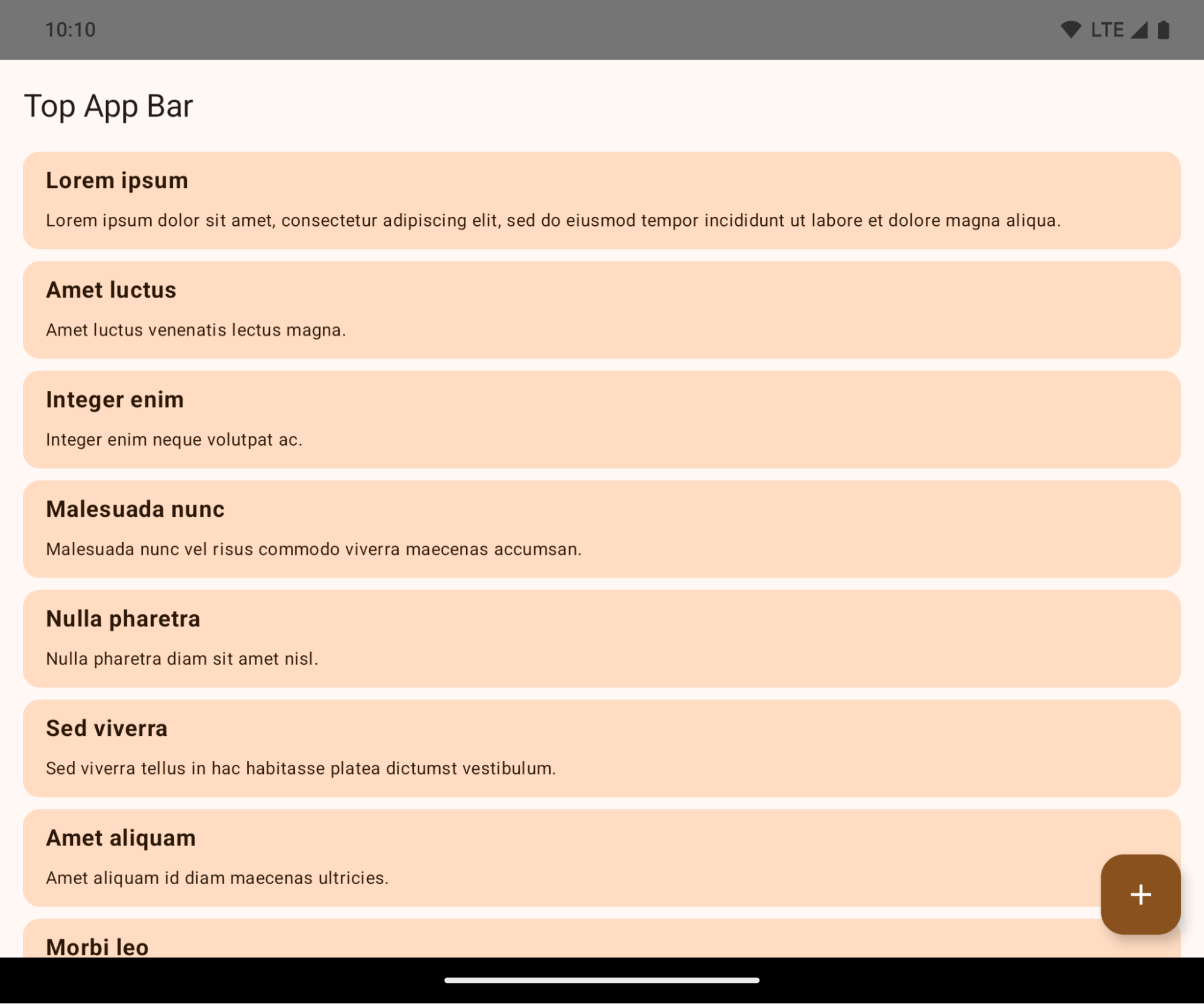
This is a breaking change that might negatively impact your app's UI. The changes affect the following UI areas:
- Gesture handle navigation bar
- Transparent by default.
- Bottom offset is disabled so content draws behind the system navigation bar unless insets are applied.
setNavigationBarColorandR.attr#navigationBarColorare deprecated and don't affect gesture navigation.setNavigationBarContrastEnforcedandR.attr#navigationBarContrastEnforcedcontinue to have no effect on gesture navigation.
- 3-button navigation
- Opacity set to 80% by default, with color possibly matching the window background.
- Bottom offset disabled so content draws behind the system navigation bar unless insets are applied.
setNavigationBarColorandR.attr#navigationBarColorare set to match the window background by default. The window background must be a color drawable for this default to apply. This API is deprecated but continues to affect 3-button navigation.setNavigationBarContrastEnforcedandR.attr#navigationBarContrastEnforcedis true by default, which adds an 80% opaque background across 3-button navigation.
- Status bar
- Transparent by default.
- The top offset is disabled so content draws behind the status bar unless insets are applied.
setStatusBarColorandR.attr#statusBarColorare deprecated and have no effect on Android 15.setStatusBarContrastEnforcedandR.attr#statusBarContrastEnforcedare deprecated but still have an effect on Android 15.
- Display cutout
layoutInDisplayCutoutModeof non-floating windows must beLAYOUT_IN_DISPLAY_CUTOUT_MODE_ALWAYS.SHORT_EDGES,NEVER, andDEFAULTare interpreted asALWAYSso that users don't see a black bar caused by the display cutout and appear edge-to-edge.
The following example shows an app before and after targeting Android 15 (API level 35), and before and after applying insets. This example is not comprehensive, this might appear differently on Android Auto.
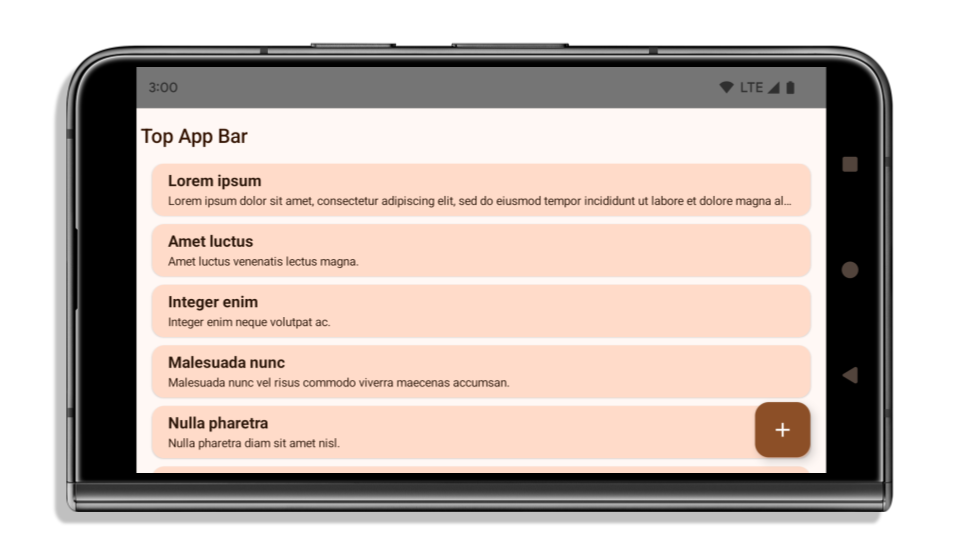
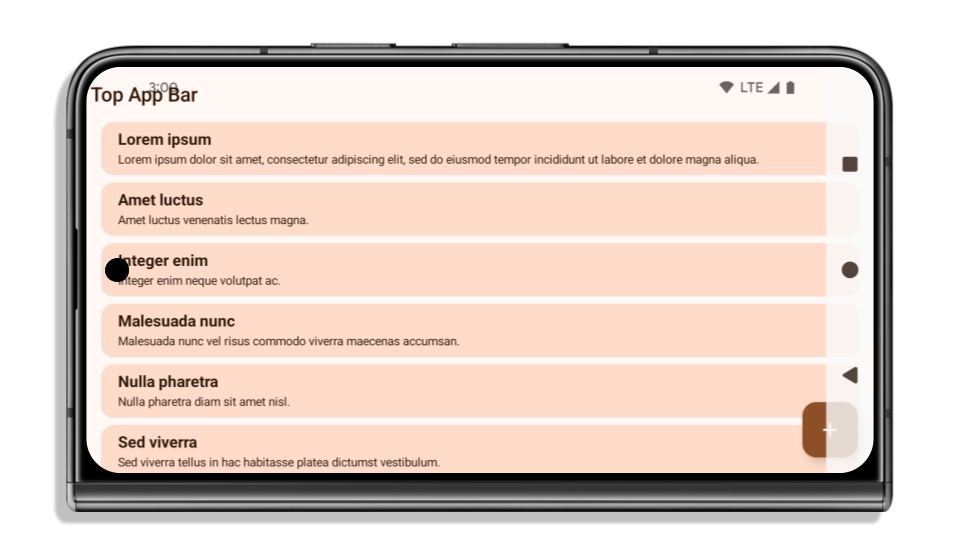
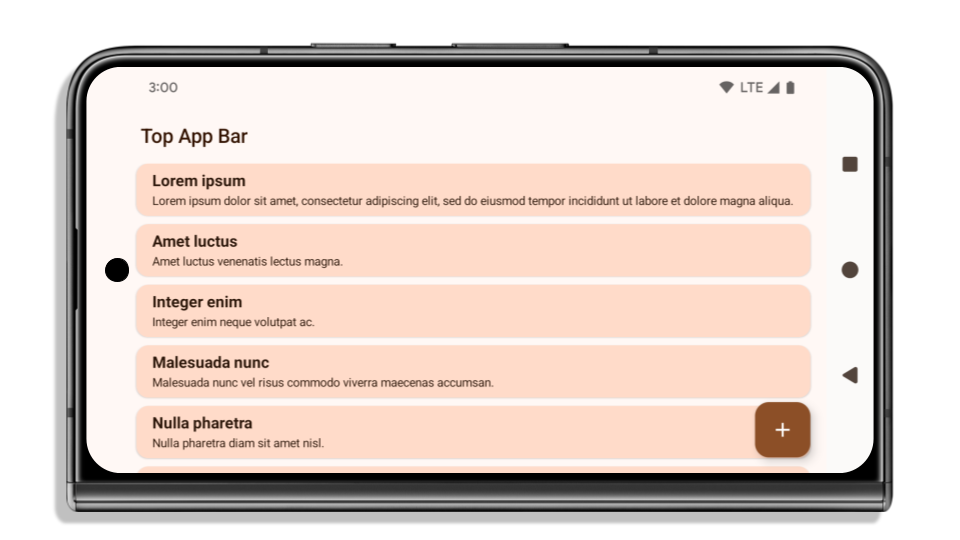
What to check if your app is already edge-to-edge
If your app is already edge-to-edge and applies insets, you are mostly unimpacted, except in the following scenarios. However, even if you think you aren't impacted, we recommend you test your app.
- You have a non-floating window, such as an
Activitythat usesSHORT_EDGES,NEVERorDEFAULTinstead ofLAYOUT_IN_DISPLAY_CUTOUT_MODE_ALWAYS. If your app crashes on launch, this might be due to your splashscreen. You can either upgrade the core splashscreen dependency to 1.2.0-alpha01 or later or setwindow.attributes.layoutInDisplayCutoutMode = WindowManager.LayoutInDisplayCutoutMode.always. - There might be lower-traffic screens with occluded UI. Verify these
less-visited screens don't have occluded UI. Lower-traffic screens include:
- Onboarding or sign-in screens
- Settings pages
What to check if your app is not already edge-to-edge
If your app is not already edge-to-edge, you are most likely impacted. In addition to the scenarios for apps that are already edge-to-edge, you should consider the following:
- If your app uses Material 3 Components (
androidx.compose.material3) in compose, such asTopAppBar,BottomAppBar, andNavigationBar, these components are likely not impacted because they automatically handle insets. - If your app is using Material 2 Components (
androidx.compose.material) in Compose, these components don't automatically handle insets. However, you can get access to the insets and apply them manually. In androidx.compose.material 1.6.0 and later, use thewindowInsetsparameter to apply the insets manually forBottomAppBar,TopAppBar,BottomNavigation, andNavigationRail. Likewise, use thecontentWindowInsetsparameter forScaffold. - If your app uses views and Material Components
(
com.google.android.material), most views-based Material Components such asBottomNavigationView,BottomAppBar,NavigationRailView, orNavigationView, handle insets and require no additional work. However, you need to addandroid:fitsSystemWindows="true"if usingAppBarLayout. - For custom composables, apply the insets manually as padding. If your
content is within a
Scaffold, you can consume insets using theScaffoldpadding values. Otherwise, apply padding using one of theWindowInsets. - If your app is using views and
BottomSheet,SideSheetor custom containers, apply padding usingViewCompat.setOnApplyWindowInsetsListener. ForRecyclerView, apply padding using this listener and also addclipToPadding="false".
What to check if your app must offer custom background protection
If your app must offer custom background protection to 3-button navigation or
the status bar, your app should place a composable or view behind the system bar
using WindowInsets.Type#tappableElement() to get the 3-button
navigation bar height or WindowInsets.Type#statusBars.
Additional edge-to-edge resources
See the Edge to Edge Views and Edge to Edge Compose guides for additional considerations on applying insets.
Deprecated APIs
The following APIs are deprecated but not disabled:
R.attr#enforceStatusBarContrastR.attr#navigationBarColor(for 3 button navigation, with 80% alpha)Window#isStatusBarContrastEnforcedWindow#setNavigationBarColor(for 3 button navigation, with 80% alpha)Window#setStatusBarContrastEnforced
The following APIs are deprecated and disabled:
R.attr#navigationBarColor(for gesture navigation)R.attr#navigationBarDividerColorR.attr#statusBarColorWindow#setDecorFitsSystemWindowsWindow#getNavigationBarColorWindow#getNavigationBarDividerColorWindow#getStatusBarColorWindow#setNavigationBarColor(for gesture navigation)Window#setNavigationBarDividerColorWindow#setStatusBarColor
Стабильная конфигурация
Если ваше приложение предназначено для Android 15 (уровень API 35) или выше, Configuration больше не исключает системные панели. Если вы используете размер экрана в классе Configuration для расчёта макета, замените его более подходящими альтернативами, такими как ViewGroup , WindowInsets или WindowMetricsCalculator , в зависимости от ваших потребностей.
Configuration доступна с версии API 1. Обычно её можно получить из Activity.onConfigurationChanged . Она предоставляет такую информацию, как плотность, ориентация и размеры окна. Важной особенностью размеров окна, возвращаемых функцией Configuration является то, что ранее она не включала системные панели.
Размер конфигурации обычно используется для выбора ресурсов, например, /res/layout-h500dp , и это всё ещё допустимый вариант использования. Однако использование его для расчёта макета всегда не рекомендовалось. Если вы всё же решили так поступить, вам следует отказаться от него сейчас. Вам следует заменить использование Configuration на что-то более подходящее в зависимости от вашего варианта использования.
Если вы используете его для расчета макета, используйте соответствующую ViewGroup , например CoordinatorLayout или ConstraintLayout . Если вы используете его для определения высоты системной панели навигации, используйте WindowInsets . Если вы хотите узнать текущий размер окна приложения, используйте computeCurrentWindowMetrics .
В следующем списке описываются поля, затронутые этим изменением:
- Размеры
Configuration.screenWidthDpиscreenHeightDpбольше не исключают системные панели. -
Configuration.smallestScreenWidthDpкосвенно влияют измененияscreenWidthDpиscreenHeightDp. -
Configuration.orientationкосвенно влияют измененияscreenWidthDpиscreenHeightDpна устройствах с экранами, близкими к квадратным. - Изменения в
Configurationкосвенно затрагиваютDisplay.getSize(Point). Этот метод устарел, начиная с API уровня 30. -
Display.getMetrics()работает таким образом, начиная с API уровня 33.
Атрибут elegantTextHeight по умолчанию имеет значение true
For apps targeting Android 15 (API level 35), the
elegantTextHeight TextView attribute
becomes true by default, replacing the compact font used by default with some
scripts that have large vertical metrics with one that is much more readable.
The compact font was introduced to prevent breaking layouts; Android 13 (API
level 33) prevents many of these breakages by allowing the text layout to
stretch the vertical height utilizing the fallbackLineSpacing
attribute.
In Android 15, the compact font still remains in the system, so your app can set
elegantTextHeight to false to get the same behavior as before, but it is
unlikely to be supported in upcoming releases. So, if your app supports the
following scripts: Arabic, Lao, Myanmar, Tamil, Gujarati, Kannada, Malayalam,
Odia, Telugu or Thai, test your app by setting elegantTextHeight to true.

elegantTextHeight behavior for apps targeting Android 14 (API level 34) and lower.
elegantTextHeight behavior for apps targeting Android 15.Изменение ширины TextView для сложных форм букв
В предыдущих версиях Android некоторые рукописные шрифты или языки сложной формы могли отображать буквы в области предыдущего или следующего символа. В некоторых случаях такие буквы обрезались в начальной или конечной позиции. Начиная с Android 15, TextView выделяет ширину для рисования достаточного места для таких букв и позволяет приложениям запрашивать дополнительные поля слева, чтобы предотвратить обрезку.
Поскольку это изменение влияет на то, как TextView определяет ширину, TextView по умолчанию выделяет большую ширину, если приложение предназначено для Android 15 (уровень API 35) или выше. Вы можете включить или отключить это поведение, вызвав API setUseBoundsForWidth в TextView .
Поскольку добавление левого отступа может привести к смещению существующих макетов, отступы не добавляются по умолчанию даже для приложений, ориентированных на Android 15 или более позднюю версию. Однако вы можете добавить дополнительные отступы для предотвращения обрезки, вызвав setShiftDrawingOffsetForStartOverhang .
В следующих примерах показано, как эти изменения могут улучшить макет текста для некоторых шрифтов и языков.

<TextView android:fontFamily="cursive" android:text="java" />
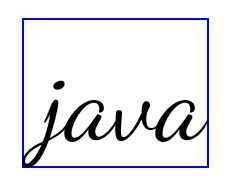
<TextView android:fontFamily="cursive" android:text="java" android:useBoundsForWidth="true" android:shiftDrawingOffsetForStartOverhang="true" />

<TextView android:text="คอมพิวเตอร์" />

<TextView android:text="คอมพิวเตอร์" android:useBoundsForWidth="true" android:shiftDrawingOffsetForStartOverhang="true" />
Высота строки по умолчанию для EditText с учетом локали
В предыдущих версиях Android текстовый макет растягивал высоту текста так, чтобы она соответствовала высоте строки шрифта, соответствующего текущему языковому стандарту. Например, если контент был на японском языке, поскольку высота строки японского шрифта немного больше, чем у латинского шрифта, высота текста стала немного больше. Однако, несмотря на эти различия в высоте строк, размер элемента EditText был одинаковым, независимо от используемой локали, как показано на следующем изображении:

EditText , которые могут содержать текст на английском (en), японском (ja) и бирманском (my). Высота EditText одинакова, хотя эти языки имеют разную высоту строк. Для приложений, ориентированных на Android 15 (уровень API 35), минимальная высота строки теперь зарезервирована для EditText , чтобы соответствовать эталонному шрифту для указанного языкового стандарта, как показано на следующем изображении:

EditText , которые могут содержать текст на английском (en), японском (ja) и бирманском (my). Высота EditText теперь включает пространство для размещения высоты строки по умолчанию для шрифтов этих языков. При необходимости ваше приложение может восстановить предыдущее поведение, указав для атрибута useLocalePreferredLineHeightForMinimum значение false , а ваше приложение может установить собственные минимальные вертикальные метрики с помощью API setMinimumFontMetrics в Kotlin и Java.
Камера и медиа
Android 15 вносит следующие изменения в поведение камеры и мультимедиа для приложений, предназначенных для Android 15 или более поздних версий.
Ограничения на запрос аудиофокуса
Приложения, предназначенные для Android 15 (уровень API 35), должны быть главным приложением или запускать службу переднего плана, чтобы запросить фокус звука . Если приложение пытается запросить фокус, хотя оно не соответствует одному из этих требований, вызов возвращает AUDIOFOCUS_REQUEST_FAILED .
Дополнительную информацию о фокусе звука можно узнать в разделе «Управление фокусом звука» .
Обновлены ограничения, не связанные с SDK
В Android 15 включены обновлённые списки ограниченных интерфейсов, не входящих в SDK, основанные на результатах сотрудничества с разработчиками Android и последних внутренних тестов. По возможности мы проверяем наличие общедоступных альтернатив, прежде чем ограничивать интерфейсы, не входящие в SDK.
Если ваше приложение не предназначено для Android 15, некоторые из этих изменений могут не сразу вас затронуть. Однако, хотя ваше приложение может обращаться к некоторым интерфейсам, не относящимся к SDK , в зависимости от целевого уровня API , использование любого метода или поля, не относящегося к SDK, всегда несёт высокий риск выхода приложения из строя.
Если вы не уверены, использует ли ваше приложение интерфейсы, не относящиеся к SDK, вы можете протестировать его , чтобы выяснить это. Если ваше приложение использует интерфейсы, не относящиеся к SDK, вам следует начать планировать миграцию на альтернативы SDK. Тем не менее, мы понимаем, что в некоторых приложениях есть обоснованные примеры использования интерфейсов, не относящихся к SDK. Если вы не можете найти альтернативу использованию интерфейса, не относящегося к SDK, для какой-либо функции вашего приложения, вам следует запросить новый публичный API .
To learn more about the changes in this release of Android, see Updates to non-SDK interface restrictions in Android 15. To learn more about non-SDK interfaces generally, see Restrictions on non-SDK interfaces.

